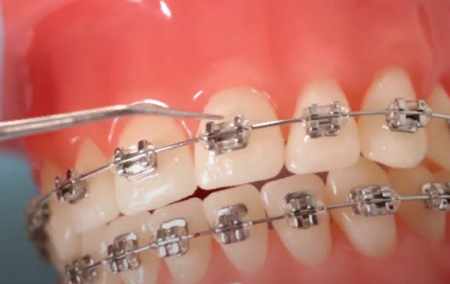Using dental braces to straighten teeth is a long, but most effective method of correcting crooked teeth.
A perfect smile is the dream of many people, but not everyone can boast of beautiful and straight teeth. Fortunately, the problem of a bad bite can now be corrected with orthodontic treatment. Bite correction is a popular and affordable service that can be used in both adolescence and adulthood. But, as a rule, the older a person gets, the more doubts they have about, “How to fix crooked teeth and should you get braces?” Let’s get to the bottom of this question together.
Is It Worth It to Get Braces for Adult?
The most favorable age interval for the correction of malocclusion is 12-18 years. During this period, all permanent teeth have already erupted, but the active growth phase continues. It is believed that until the age of 18 orthodontic treatment takes minimal time and will be most effective. But that’s not entirely true. In many ways, the successful result of treatment and time of bite correction depends on the patient: how responsibly he or she approaches the process, adheres to the orthodontist’s recommendations and makes regular visits to the clinic. Adults are more sensitive about this issue than teenagers, so wearing braces also brings the desired results.
Adult bite correction is often demonstrated not only for aesthetic reasons, although the desire to have a beautiful smile is in most cases the main reason for the patient to visit an orthodontist. Besides dissatisfaction with appearance and self-doubt, a wrong bite is often the cause of health problems: pain in the jaw, enamel wear, gastrointestinal diseases due to poor chewing, headaches due to pressure on joints and nerve endings.
So do you need braces?
In 95% of cases the answer is “Yes!”. Exceptions are contraindications and individual characteristics of the patient, which we will talk about later. All that’s left is to dispel the main fears and take a step towards a beautiful smile!
Types of Braces
Orthodontic systems are divided into external (vestibular) and internal (lingual).
- External braces are the most common option. The most popular systems are metal, ceramic, and sapphire. Metal braces have the lowest price, but they are the most noticeable on the teeth. Ceramic and sapphire braces are less conspicuous, but they cost more.
- Lingual braces are designs that are placed on the back of the teeth and are completely invisible when smiling. Because of this, the system is often of interest, but this option has a number of drawbacks: complicated care, possible trauma to the tongue and mucosa, extended wearing time, the highest price.
Disadvantages and Contraindications
About the disadvantages of braces systems, we have already partially written above. All of them are not so significant to doubt whether to put braces on the jaw. The main ones are possible damage to the enamel, complicated oral care, time, and cost of treatment.
When is Braces Contraindicated?
Absolute contraindications are not numerous: epilepsy, tuberculosis, hiv, developmental features. The others are relative: the presence of untreated teeth and inflammatory processes in the mouth, severe dental erosion, some diseases of the cardiovascular system, exceptional cases. Your dentist will be able to tell you exactly whether you need a bite correction in your situation after the examination and diagnosis.






